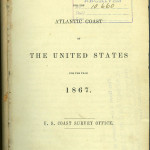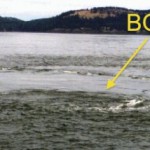So, Fox News pundit Bill O’Reilly was apparently baffled about the science behind tides, using it as an ammo when talking to an atheist leader (whose expression is priceless) on his program. A more entertaining summary of the clip below (NSFW warning: Bill drops an F-bomb), but the full clip here if you are inclined towards having you brain slowly drilled into with a dulled drillbit, or perhaps even a holesaw.
(Yes, Mr. O’Reilly, you aren’t the smartest person in the room…)
But, thankfully, as my man Neil Degrasse Tyson calmly expounded, scientists DO know how tides work. Here is a clip from Minute Physics explaining tidal physics:






Erm, hang on a sec, but as someone who teaches tides to students, I don’t think that video is quite right (as it happens, I was just going over this with my tutees today…).
It’s not just the “Moon’s gravity”; the two tidal bulges result from an imbalance between two forces: the Moon’s gravitation (acts towards the Moon’s centre of mass, and varies with distance, of course), and an “apparent”, inertial force (“centrifugal force”) resulting from the movement of the Earth-Moon system around its common centre of mass (and that centrifugal force is the same magnitude for all points on the Earth, and always acts parallel in a direction away from the Moon).
On the side of the Earth facing the Moon, the Moon’s gravitation “wins”, and the resulting force acts towards the Moon, giving one tidal bulge. On the opposite side of the Earth, where the Moon’s gravitation is weaker, the “centrifugal” force wins, and the resultant force acts away from the Moon, giving the other tidal bulge.
There’s a better explanation here, with diagrams – http://www.pol.ac.uk/home/insight/tidefaq.html#4
But even that’s not the full story – that’s the “equilibrium model” of tides figured out by Isaac Newton. Unfortunately, it doesn’t predict the tidal reality at many places on Earth. It took the “dynamic theory” of tides, developed by Pierre Laplace and others, to gain a full picture of what was going on.
Key difference: we can think of the tidal bulges as a “wave” travelling over the surface of the Earth (while we in fact rotate under them as the Earth spins). That “tidal wave” has a very long wavelength (half the circumference of the Earth to go from bulge to bulge), so it behaves like a shallow-water wave: its speed will be determined by water depth [c = sqrt(g.h)]. And unfortunately the depth of the ocean isn’t great enough to allow the wave to travel fast enough to keep up with the tide generating forces as the Earth spins under them.
So from the equator to latitude 26 deg, we see 6 h 13 mins of “tidal lag” (the bulges lag until they’re influenced by the next set of tide-generating forces following up behind); from 26 to 65 deg latitude that tidal lag decreases (as the distance the tidal wave has to travel in 24h decreases), and beyond 65 deg latitude we see “direct tides” that conform to the equilibrium model.
Anyway, the point is: while it’s fun to take the mickey out of Bill (the words “fish” and “barrel” spring to mind), tides are perhaps more complicated than we might think…
Yes, but at least you understood them, hence it exists in our current knowledge base ;p
But I think the bigger point of the issue is what Neil Tyson says, to paraphrase, just you can’t explain it doesn’t mean someone doesn’t know or that we will never find out.
Thanks for the explanation!
The title of this page explains exactly how i feel when my father tells me i had to do research on tides and there wasn’t enough information on it. This really helped.